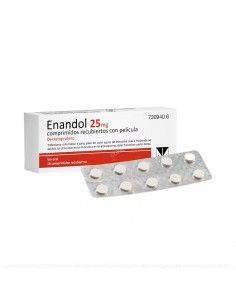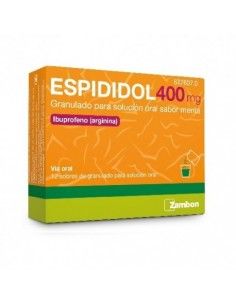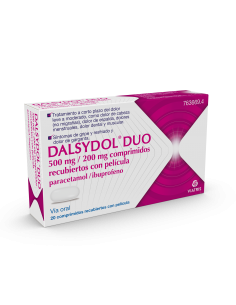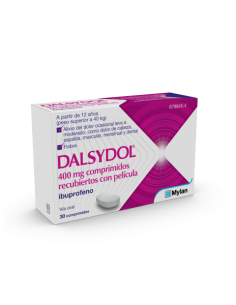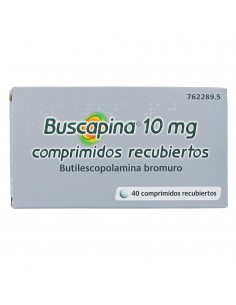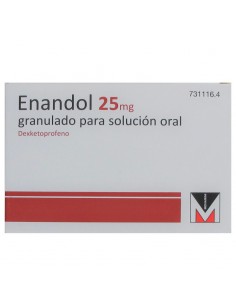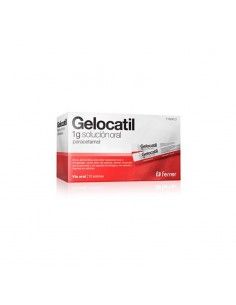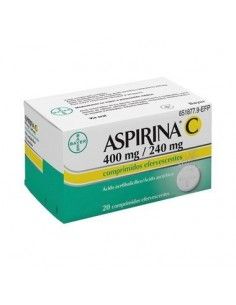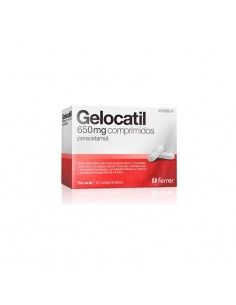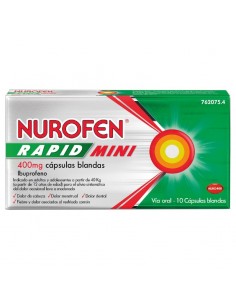Cafiaspirin 500/50 20 Tablets
Action and mechanism
Acetylsalicylic acid belongs to the group of analgesic antipyretic and non-steroidal anti-inflammatory drugs (NSAIDs). The analgesic effect of acetylsalicylic acid is achieved peripherally due to inhibition of prostaglandin synthesis, which prevents stimulation of pain receptors by bradykinin and other substances. Central effects on the hypothalamus are also possible in pain relief.
The antipyretic effect appears to be due to inhibition of prostaglandin synthesis, although the nuclei of the hypothalamus play a significant role in controlling these peripheral mechanisms.
Acetylsalicylic acid inhibits the formation of thromboxane A2 by acetylation of platelet cyclooxygenase. This antiplatelet effect is irreversible during the life of the platelet.
Caffeine is pharmacologically similar to other xanthines such as theobromine and theophylline. Caffeine stimulates the central nervous system by antagonising adenosine receptors.
Indications
- PAIN]: Symptomatic relief of mild to moderate pain, [HEADACHE], [ODONTALGIA], [DYSMENORRHEA], [CONTRACTURE], [LUMBALGIA].
- FEVER]: Febrile states.
Posology
- Adults and children over 16 years of age, oral: dose of 500 mg acetylsalicylic acid (1 sachet or tablet) every 4-6 hours. Not to exceed 4 g of acetylsalicylic acid (8 sachets or eight tablets) in 24 hours.
- Children: Do not use in children under 16 years of age.
- Cardiac patients: reduce the dose (see precautions section).
Always use the lowest effective dose.
The administration of this preparation is subject to the onset of painful or febrile symptoms. As soon as these symptoms disappear, this medicine should be discontinued.
Posology in renal insufficiency
* ClCr < 10 ml/min: Not recommended.
Posology
IN HEPATIC INSUFFICIENCY
* Severe: Not recommended.
Guidelines for correct administration
Take the medicine with meals or with milk, especially if digestive discomfort is noted.
Contraindications
Acetylsalicylic acid should not be administered in the following cases:
- Patients with active, chronic or recurrent [PEPTIC ULCER], [ACUTE GASTRITIS]: may cause aggravation of the disease or exacerbation of gastric bleeding or recurrence of gastrointestinal lesions.
- Patients with [ASTHMA]: there is an increased risk of bronchospastic hypersensitivity reactions.
- Patients with a history of [SALICYLATE ALLERGY], to any of the components of this speciality, [NSAID ALLERGY] or to tartrazine (cross-reaction).
- Patients with [XANTHIN ALLERGY] (aminophylline, theophylline,...) may also be sensitive to caffeine.
- Patients with diseases with [COAGULATION ALTERATIONS], mainly [HEMOPHILIA] or [HYPOPROTHROMBINEMIA].
- Concomitant therapy with oral anticoagulants.
- Patients with nasal [NASAL POLIPES] associated with asthma that are induced or exacerbated by acetylsalicylic acid.
-Children under 16 years of age, since in these cases the intake of acetylsalicylic acid has been associated with Reye's syndrome.
Precautions
- DIABETES]: high doses of acetylsalicylic acid may cause alterations in glycaemia. Caffeine may raise blood glucose levels and should be considered in diabetic patients.
- GLUCOSE-6-PHOSPHATE DEHYDROGENASE DEFICIENCY: risk of haemolytic anaemia with high doses of ASA.
- Alcohol: Alcohol should not be ingested as it increases the adverse gastrointestinal effects of acetylsalicylic acid, and is a triggering factor in the chronic irritation produced by it.the use of acetylsalicylic acid in patients who regularly consume alcohol (three or more alcoholic drinks -beer, wine, liqueur,...
- per day) can cause gastric haemorrhage.
- RENAL INSUFFICIENCY]: Acetylsalicylic acid and its metabolites are mostly excreted in the urine. Additionally, patients with renal insufficiency are at increased risk of renal toxicity.
- HEPATIC INSUFFICIENCY: Salicylates are metabolised in the liver. In hepatic cirrhosis and severe hepatic insufficiency there is, respectively, an increased risk of renal adverse effects and haemorrhage.
- Because of its caffeine content, it should be administered with caution in patients with severe heart disease, [CARDIAC ARRHYTHMIA], because of the risk of tachycardia and extrasystole, [HYPERTHYROIDISM], [ANXIETY]. In these patients, do not administer more than 100 mg/day of caffeine.
- Medicinal products containing acetylsalicylic acid should not be administered to children, in particular to children under 16 years of age and adolescents suffering from viral diseases with or without fever without consulting a doctor or pharmacist. In some viral diseases, especially influenza A, influenza B and chickenpox, there is a risk of Reye's syndrome. The risk of this disease increases with concomitant use of acetylsalicylic acid, but no cause-effect relationship between them has been proven. In some children, acetylsalicylic acid may be a triggering factor for the onset of Reye's syndrome. If continuous vomiting or lethargy occurs, this could be a symptom of Reye's syndrome and treatment should be stopped immediately.
Patient advice
- Take the medicine with food, especially if you experience digestive discomfort. If you take a tablet, stay upright for at least 15 minutes to avoid damage to your oesophagus.
- Do not drink alcoholic beverages, as alcohol increases the gastrointestinal side effects of acetylsalicylic acid.
- It is advisable to stop taking it one week before surgery. Acetylsalicylic acid should be avoided before or after dental extraction or surgery.
- Keep out of the reach of children. Acetylsalicylic acid poisoning is common in children.
- Keep the medicine in a dry place. Moisture may decrease the effectiveness of the medicine.
Special warnings
- If pain persists for more than 10 days, fever for more than 3 days or other symptoms worsen or appear, the clinical situation should be evaluated.
- Do not administer systematically as a preventive for possible discomfort caused by vaccinations.
- Advise the patient during prolonged treatment with acetylsalicylic acid to watch for signs of coagulation disorders (skin spots, bleeding gums, black stools).
- Acetylsalicylic acid may interfere with some analytical tests.
Interactions
- Acetazolamide. ASA has resulted in increases in acetazolamide levels of up to 80-200%, probably due to displacement of plasma protein binding. There is a risk of intoxication and therefore avoidance is recommended. In addition, acetazolamide may lead to systemic acidosis, which may delay the elimination of salicylates. Although no cases of this interaction with other carbonic anhydrase inhibitors have been reported, it cannot be ruled out.
- Urinary acidifiers (ascorbic acid, ammonium chloride, methionine) or urinary alkalinisers (absorbable antacids). ASA is a weak acid whose elimination in urine depends on urinary pH. Drugs that decrease pH will decrease renal elimination, while those that increase pH will result in increased elimination.
- Tyludronic acid. Pharmacokinetic interaction has been detected, as ASA may decrease the bioavailability of tiludronate by up to 50% when taken within one hour of tiludronate. It is recommended that these drugs be administered at least 2 hours apart.
- Valproic acid. There have been cases of increased valproate levels associated with ASA administration. The interaction could be due to competition between the two drugs for the same renal elimination mechanism. Dosage adjustment may be necessary.
- NSAIDS. Co-administration of ASA with other NSAIDs, including coxibes, may increase the risk of peptic ulcer and gastric bleeding. In addition, it has been shown that ASA may reduce plasma levels of other NSAIDs, especially those with arylpropionic structure such as ibuprofen.
-Aliskiren. Possible reduction of the antihypertensive effect of aliskiren (NSAIDs act on the renin-angiotensin system). In patients with compromised renal function (dehydrated or elderly) deterioration of renal function may be precipitated (possible acute renal failure, usually reversible). Caution, especially in the elderly, monitoring antihypertensive effect and renal function.
- Antacids. Antacids may delay and decrease the absorption of ASA. In addition, absorbable antacids may increase the elimination of ASA.
- Antiplatelet agents. Clopidogrel and ticlopidine may potentiate the antiplatelet effects of ASA. Dipyridamole has increased Cmax and AUC in pharmacokinetic studies by 31.5% and 37% respectively, probably due to inhibition of metabolism, with a consequent risk of toxicity. In the case of prasugrel, concomitant administration is indicated, since the efficacy and safety of prasugrel was studied in patients receiving ASA.
- Oral anticoagulants. ASA has been shown to potentiate the effects of anticoagulants such as acenocoumarol, with the consequent risk of bleeding, especially of gastric origin. This interaction could be due to the hypoprothrombinaemic effects of ASA at high doses (more than 3 g) or to inhibition of platelet aggregation. Administration of single doses of ASA does not seem to be of great risk. However, it is advisable to avoid the association in patients treated with ASA for long periods, using salicylates or other NSAIDs without antiplatelet aggregation effects, and if this is not possible, to take extreme precautions and monitor the INR.
- Anti-ulcer drugs. Pharmacokinetic studies have shown that the increase in gastric pH produced by H2 antihistamines or hydrogen pump inhibitors could increase the absorption of ASA, with the possible risk of intoxication. In patients receiving high doses of ASA, a decrease in dosage may be necessary.
- Barbiturates. ASA may increase barbiturate concentrations, with a possible risk of intoxication.
- Beta-blockers. The administration of ASA at high doses, above 2 g, has led to a decrease in the antihypertensive effects of beta-blockers. Although the cause is unknown, it could probably be due to inhibition of prostaglandin synthesis, which appears to mediate the antihypertensive effects of beta-blockers. It is therefore recommended to avoid treatment with high doses of ASA in patients treated with a beta-blocker.
- Cyclosporine. NSAIDs may increase cyclosporine nephrotoxicity. Periodic assessment of renal function is recommended, especially in the elderly.
- Corticosteroids. There is an increased risk of gastric mucosal damage. In addition, it appears that corticosteroids may reduce plasma levels of ASA, although the mechanism is unclear. However, it is thought that it could be due to increased glomerular filtration and decreased tubular reabsorption. In turn, ASA may displace corticosteroids from protein binding, leading to toxic effects.
- Digoxin. ASA may increase digoxin concentrations, increasing the risk of intoxication. Dosage adjustment may be necessary.
- Diuretics. Several trials have shown that ASA may slightly reduce the diuretic effects of drugs such as furosemide, and spironolactone natriuretics. In addition, acute renal failure may be more common, especially in dehydrated patients treated with thiazide diuretics.
- Ototoxic drugs. ASA may increase the ototoxicity of drugs such as aminoglycosides, cisplatin, erythromycin, furosemide or vancomycin, especially at high doses.
- Phenytoin. ASA may, at high doses, displace phenytoin from its protein binding sites, leading to toxic effects. However, symptoms of such interaction do not usually appear, as free phenytoin undergoes redistribution in tissues, decreasing its plasma concentrations. Monitoring of the patient is recommended.
- Griseofulvin. Griseofulvin could strongly decrease the absorption of ASA, so it is recommended to avoid the association.
- Heparin. A large number of cases have been reported in which the administration of heparin together with ASA resulted in a potentiation of the anticoagulant effects, with an increased risk of haemorrhage. Although heparin has been associated with ASA to reduce mortality associated with postoperative thromboembolism, the risk should be assessed in each patient, and coagulation parameters should be monitored.
- Ibuprofen. Experimental data suggest that ibuprofen may inhibit the effect of low-dose
low doses of ASA on platelet aggregation when administered concomitantly. However, there is no clinical evidence and it is likely that there is no relevant effect with occasional use of ibuprofen.
- ACE INHIBITORS. Studies have shown an antagonistic effect of NSAIDs at doses of more than 1 g on ACE inhibitors, probably due to inhibition of prostaglandin synthesis, which has vasodilator effects. Regular blood pressure monitoring is recommended.
- SSRIS. There is an increased risk of haemorrhage in general, and gastric haemorrhage in particular, so it is recommended to avoid the association.
- Lithium. ASA may decrease lithium clearance, increasing the risk of intoxication. A dosage adjustment may be necessary.
- Methotrexate. Numerous cases have been reported in which ASA administration potentiated the effects of methotrexate. The effects could be due to displacement of methotrexate from its protein binding sites by ASA, or by decreased renal clearance due to inhibition of tubular secretion. This effect is especially important in elderly patients with renal insufficiency. Extreme caution is recommended because of the risk of severe pancytopenia.
- Nitroglycerin. Pharmacokinetic studies have shown that ASA may increase plasma levels of nitroglycerin by up to 54%, perhaps due to a decrease in hepatic flux and metabolism of nitroglycerin. In contrast, prolonged treatment with ASA resulted in increased nitroglycerin requirements for the same effect, perhaps due to decreased production of vasodilator prostaglandins. Patient monitoring is recommended.
- Pentazocine. A case of reversible renal toxicity of ASA with the addition of pentazocine has been described. It is recommended to assess the patient's renal function.
- Sulphonylureas. The administration of ASA at high doses, above 2 g, could potentiate the hypoglycaemic effects of sulphonylureas. The mechanism is unknown, but ASA may displace sulphonylureas from their plasma protein binding sites and may reduce renal elimination of some of them, such as chlorpropamide. It is recommended to monitor blood glucose levels, especially at the beginning and end of treatment with ASA, adjusting the dosage of the sulphonylurea if necessary.
- Uricosurics. ASA has uricosuric effects at high doses, above 3 g, but at low doses, it has been shown that it can antagonise the effects of probenecid or sulfinpyrazone. In addition, uricosurics may decrease the elimination of ASA. Accumulation of uric acid and ASA may occur. It is therefore recommended to avoid the association.
- Verapamil. Cases of potentiation of the antiplatelet effects of ASA by verapamil have been reported. Patient monitoring is recommended.
- Zafirlukast. Pharmacokinetic studies have shown that ASA may increase zafirlukast levels by up to 45%, with a possible risk of toxicity. Patient monitoring is recommended.
- Zidovudine. Plasma concentrations of zidovudine may be increased by competitively inhibiting glucuronidation or directly inhibiting hepatic microsomal metabolism, and may reach levels in the liver.
hepatic microsomal metabolism and may reach toxic levels. Caution should be exercised. Also increases toxicity of acetylsalicylic acid.
- Food. Pharmacokinetic studies have shown that administration of ASA after meals may reduce absorption by up to 50%. Therefore, if rapid effects are desired, it is advisable to administer ASA on an empty stomach. However, administration with meals reduces the risk of gastric irritation.
- Ethyl alcohol. There is an increased risk of gastric damage, so it is recommended that alcohol consumption be avoided, especially in the 8-10 hours after a dose of ASA. Patients who consume more than three alcoholic drinks a day should avoid the use of ASA and replace it with another NSAID.
Pregnancy
Acetylsalicylic acid: FDA Category D. Animal studies with salicylates have reported teratogenic and embryocidal effects. Salicylates rapidly cross the placenta. Controlled studies with acetylsalicylic acid (ASA) in humans have not demonstrated teratogenicity. Chronic use of high-dose salicylates during the 3rd trimester may prolong gestation, which could result in fetal damage or death due to decreased placental function, and increase the risk of maternal antenatal haemorrhage. Use of salicylates, especially ASA, during the last 2 weeks of pregnancy may increase the risk of fetal or neonatal haemorrhage. Regular or excessive use during late pregnancy could theoretically result in premature closure of the fetal ductus arteriosus, as well as increased risk of stillbirth or neonatal death (possibly due to antenatal haemorrhage, premature closure of the ductus arteriosus and lower birth weight); however, this was not observed in therapeutic dose studies. Chronic treatment with high-dose salicylates during late pregnancy may prolong and complicate labour and increase the risk of maternal or foetal haemorrhage. The use of ASA (analgesic doses) is only acceptable in the absence of safer therapeutic alternatives; chronic use or high doses are not recommended, especially during the 3rd trimester.
Caffeine: FDA Category C.
Breastfeeding
Acetylsalicylic acid, as well as other salicylates, are excreted with breast milk in low amounts. There is a potential risk of effects on platelet function in the newborn, although these have not been reported with the use of ASA. It is generally recommended that breastfeeding be discontinued in nursing mothers on long-term and/or high-dose therapy; however, some experts determine that occasional single doses do not appear to pose a significant risk to the infant.
Caffeine is excreted in breast milk in small amounts.
Children
Contraindicated in children under 16 years of age as use of acetylsalicylic acid has been linked to Reye's Syndrome, a rare but serious condition.
Elderly
The elderly may be more sensitive to the toxic effects of acetylsalicylic acid, probably due to decreased renal function.
Adverse reactions
The adverse effects of acetylsalicylic acid are mostly a consequence of the mechanism of its pharmacological action and mainly affect the gastrointestinal tract. Some 5-7% of patients experience some type of adverse effect.
The most characteristic adverse effects are
- Gastrointestinal: Frequent (1 9%): [Nausea], [DYSPEPSIA], [VOMITING], [GASTRIC ULCER], [DUODENAL ULCER]. Less frequently, [GASTROINTESTINAL HEMORRHAGE] ([MELENA], [HEMATEMESIS]).
- Dermatological/hypersensitivity: [URTICARIA], [EXEMPTEMATIC ERUPTIONS], [ANGIOEDEMA], [RHINITIS], paroxysmal [BRONCHIAL SPASM] and severe [DYSNEA]. [EXCESS SWEATING] (at high doses). In patients with a history of hypersensitivity to acetylsalicylic acid and other non-steroidal anti-inflammatory drugs, anaphylactic or anaphylactoid reactions may occur. This may also occur in patients who have not previously shown hypersensitivity to these drugs.
- Hepatic: Rare (<1%): reversible [HEPATOTOXICITY] (particularly in patients with juvenile arthritis, systemic lupus erythematosus rheumatic fever and history of hepatic impairment), alteration of liver function parameters. Very rarely, [KING'S SYNDROME] (in children under 16 years of age) with very serious consequences.
- Central nervous system: With high doses, [Dizziness], [HEADACHE], [CONFUSION], [NERVOUSNESS], [ANXIETY].
- Otorhinolaryngological: [TINNITUS], [DEAFNESS] (with high doses).
- Renal: [RENAL INSUFFICIENCY] and acute [INTERSTITIAL NEPHRITIS] (with high doses).
- Blood: [HYPOPROTHROMBINEMIA] (at high doses), [LEUCOPENIA], [TROMBOPENIA] and prolongation of bleeding time and [ANEMIA].
Treatment should be discontinued immediately if the patient experiences any episode of deafness, tinnitus or dizziness.
Due to the presence of caffeine in the preparation, adverse reactions may occur as a result of CNS stimulation with symptoms such as nervousness or restlessness or mild gastrointestinal irritation. These adverse effects depend on sensitivity to caffeine and the daily dose. Vegetatively labile individuals may react to even low doses of caffeine with insomnia, restlessness, tachycardia and possibly gastrointestinal discomfort.
Overdose
Symptoms: Symptoms of salicism - nausea, vomiting, ringing, deafness, sweating, vasodilatation and hyperventilation, headache, blurred vision and occasionally diarrhoea
- are signs of overdose. Most of these reactions are caused by the direct effect of the compound. However, vasodilation and sweating are the result of accelerated metabolism.
Disturbances in acid-base balance are common, which may influence the toxicity of salicylates by changing their distribution between plasma and tissues. Stimulation of respiration leads to hyperventilation and respiratory alkalosis. Impaired oxidative phosphorylation leads to metabolic acidosis.
In salicylate poisoning, both symptoms occur to some degree but the metabolic component tends to predominate in children up to 4 years of age, while respiratory alkalosis is more common in older children and adults.
Neurological disorders such as confusion, delirium, convulsions and coma are signs of acute poisoning. Signs of salicism occur when plasma salicylate concentrations exceed 300 mg/l. Supportive measures are needed for adults with salicylate plasma concentrations of more than 500 mg/l and for children when concentrations exceed 300 mg/l.
Treatment: There is no antidote for salicylate poisoning. In the case of a suspected overdose, the patient should be kept under observation for at least 24 hours, as symptoms and blood salicylate levels may not be evident for several hours. Overdose is treated with gastric lavage, forced alkaline diuresis and supportive therapy. Restoration of acid-base balance in conjunction with haemodialysis may be required in acute cases.
Symptoms of caffeine overdose result from excessive CNS stimulation (insomnia, restlessness, vomiting, convulsions and excitation symptoms) and gastrointestinal irritation (nausea, vomiting, diarrhoea, abdominal pain).















